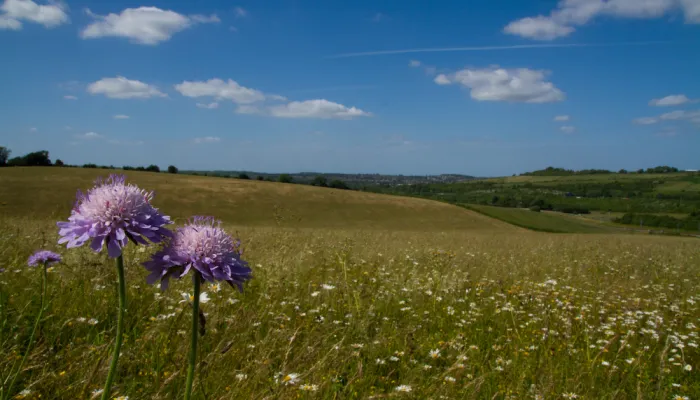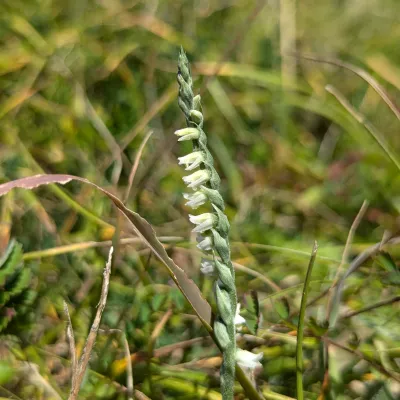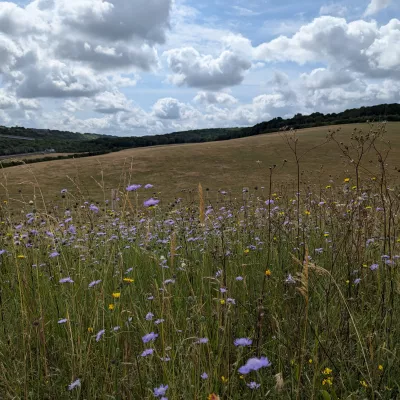Nashenden Volunteers Update
The Nashenden team have been busy over the summer cutting back and clearing the circular footpaths around the reserve, allowing walkers and horse riders to fully enjoy the site and views across the valley. Next up for the team will be to cut and clear around one of the ponds on site to stop it becoming swamped by brambles.
The Queendown team have spent the past few weeks getting the hay fields ready to be cut. This year we had four fields being cut for hay, much of this crop will be sold on to recover costs, while some is held back in case of a harsh winter, and will be used across the county if needed to top up our livestock doing their work out on reserves. As a little ease off from working through some very hot days, the team also spent a day doing their annual butterfly count across the reserve. Although there were okay numbers of common species like Meadow Browns, and a couple of other highlights. The first of the second generation Adonis Blue made an appearance and Silver-spotted Skippers were living up to their name skipping over the turf, there were definitely some notable absentees likely held back by the wet spring earlier in the year. The team also counted the last of the orchids on the reserve, with Autumn Ladies Tresses now popping up with around 50-60 on the reserve so far this year. Our one lonely Lizard orchid also seems to be setting seed, so fingers crossed the population will increase.
The Darland team have been hard at work tackling the vast network of paths that crisscross the reserve, cutting them back and keeping them open for visitors to the site.
With some 3.5km of paths cut so far the team have definitely been busy allowing others to enjoy the reserve. Earlier in the summer the team counted over 15,500 Man Orchids, and its looking like many of them have developed seed pods, so the future looks good for the Darland army, it wont be long before the volunteer team is back tackling the woody regrowth across the banks to ensure these orchids, and many other species on the reserve can continue to flourish.



